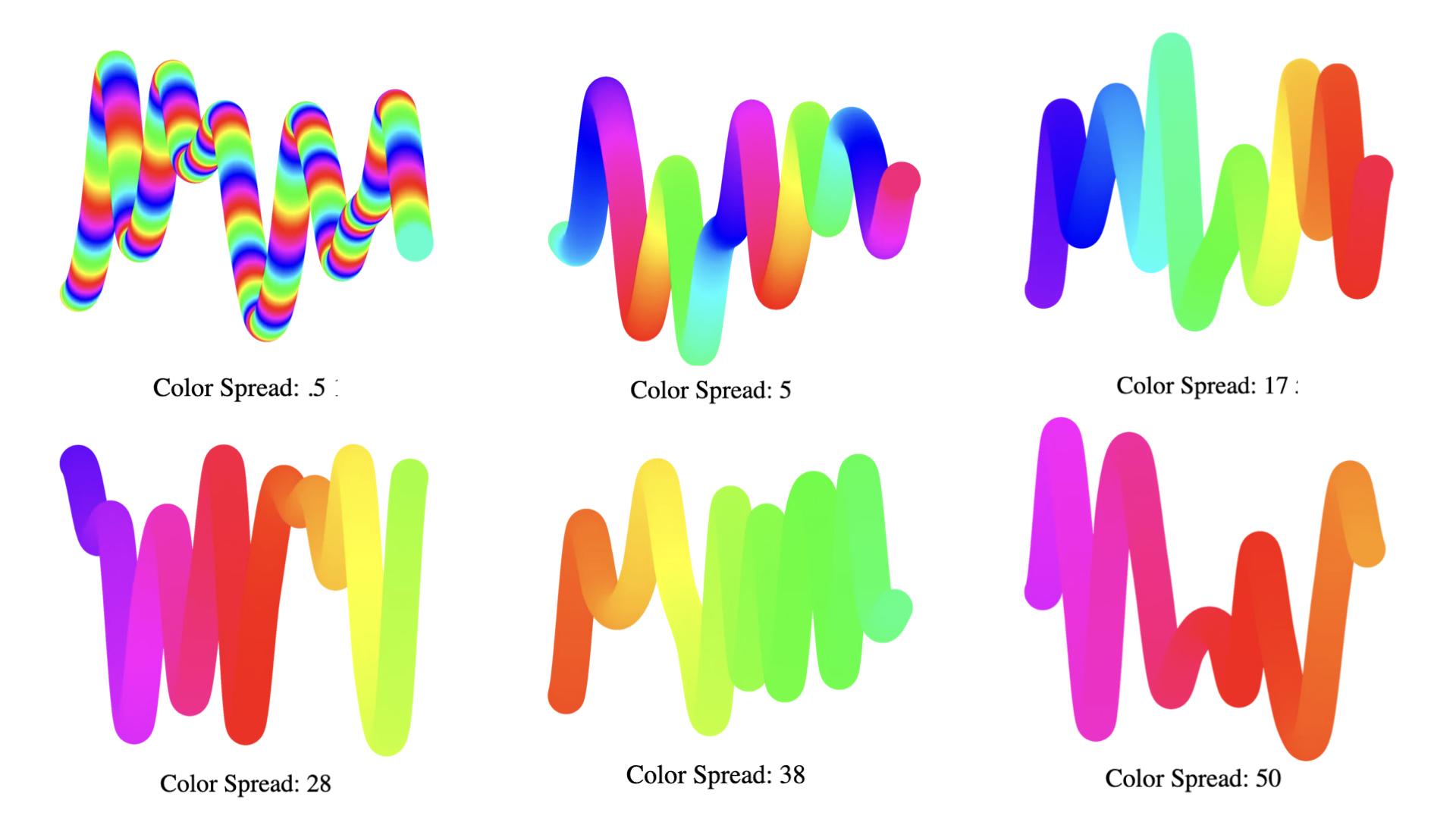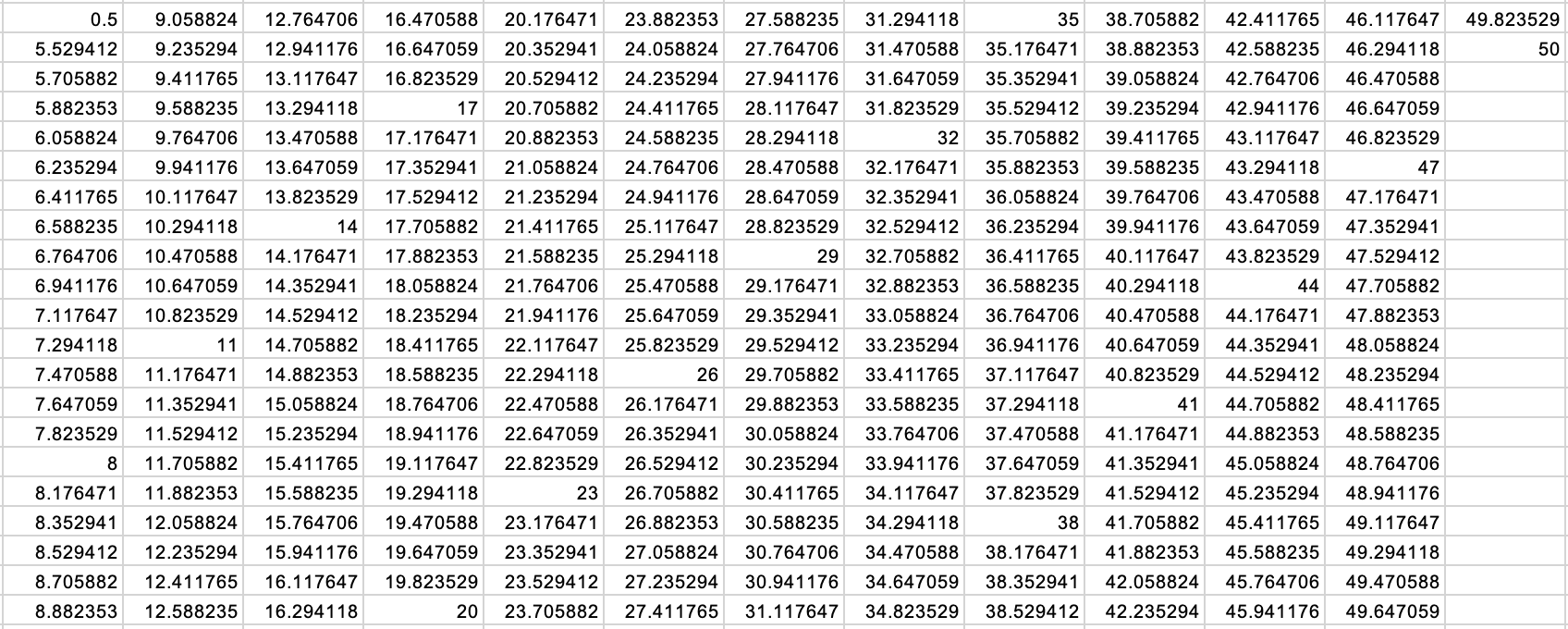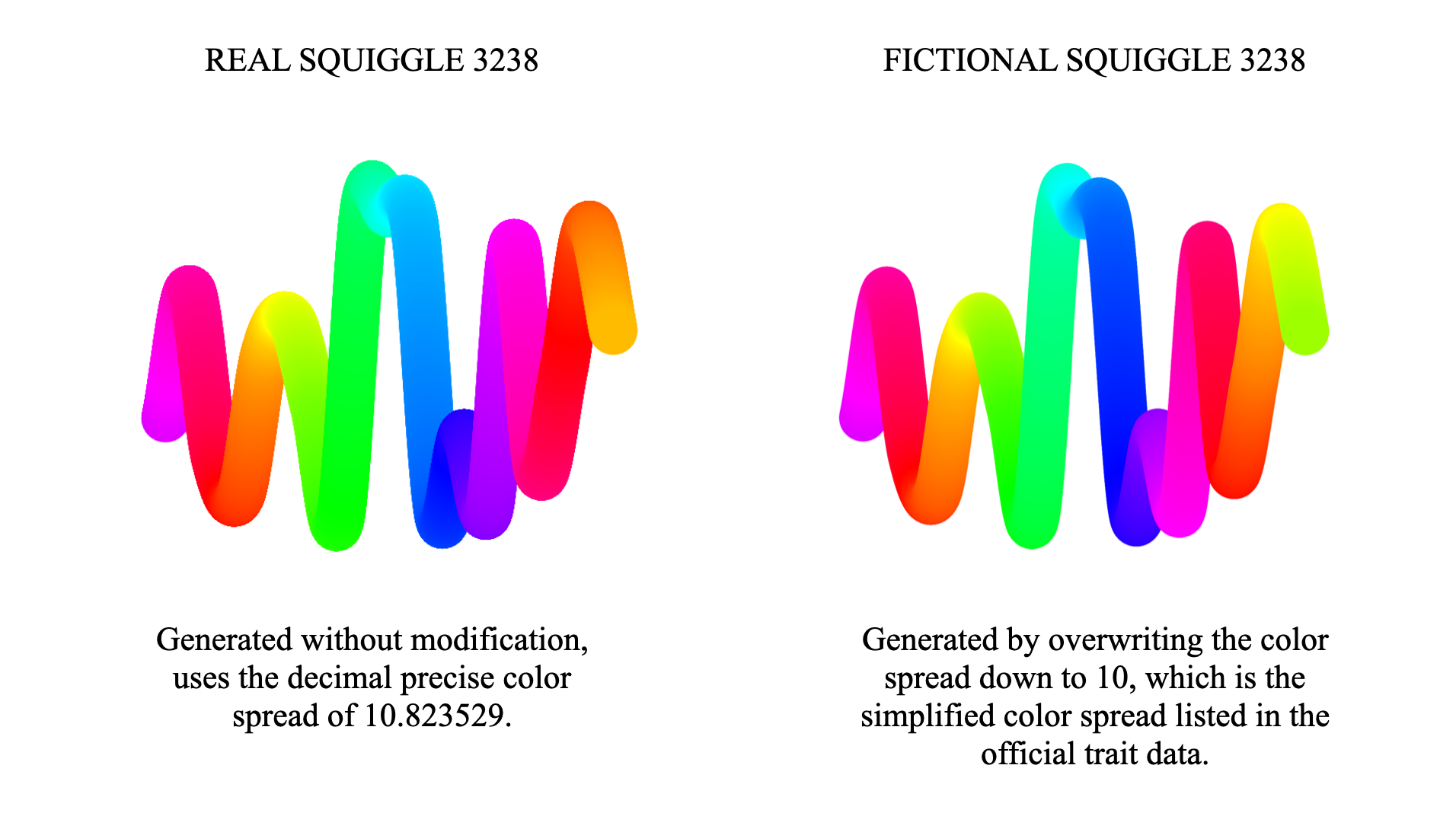Exploring the Color Spread
By: Yamamoto
Note: This is part 3 of a series on the Chromie Squiggle traits. You can read part 1 on segments here, and part 2 on steps here.
Summary: We're going to explore why the Color Spread trait and take a look at some of the math code behind the trait.
What is the Color Spread?
The Color Spread trait indicates the speed the colors change in a squiggle. There's 47 possible values. 5-50 and .5 (47 possible values).
The lower the spread, the faster the color changes. The higher the spread, the less color change you will see.
This is visualized below, where the lowest spread, of a .5 has the most color, as the numbers progress higher, the speed the color cycles slows, and less color is displayed overall.

How is the color spread derived?
While the official trait data shows 47 unique values, there are actually 254 decimal precise values. Here's the full list.

How did we go from 254 to 47? In the official trait data, these were all rounded down to the nearest whole number. So an 10.82, is treated the same as an 10.
This may seem like a trivial difference, but there's actually a significant visual and mathematical difference between a color spread of 10, and a spread of 10.82, especially when compounded over thousands of hue changes that occur.
Below is Squiggle 3238, the official trait data says it's a color spread of 10, but it's actually generated using a color spread of 10.823529.
Below on the left is the real squiggle 3238 (generated with the decimal precise color spread of 10.823529)
On the right is a fictional version of squiggle 3238, where I manually edited the code, and changed the color spread to the value 10 (the simplified value listed in the official trait data). Notice the difference in color, specifically at the end.

Summary
The Color Spread trait dictates the speed the color changes in a squiggle, the lower the spread, the more color that will be visible. This trait was simplified from a decimal precise value and rounded down to the nearest whole number for every squiggle. While rounding down the number is great for simplifying the data for collectors, this rounding has a major impact on traits that were derived using a rounded number, which I'll explore in subsequent essays.